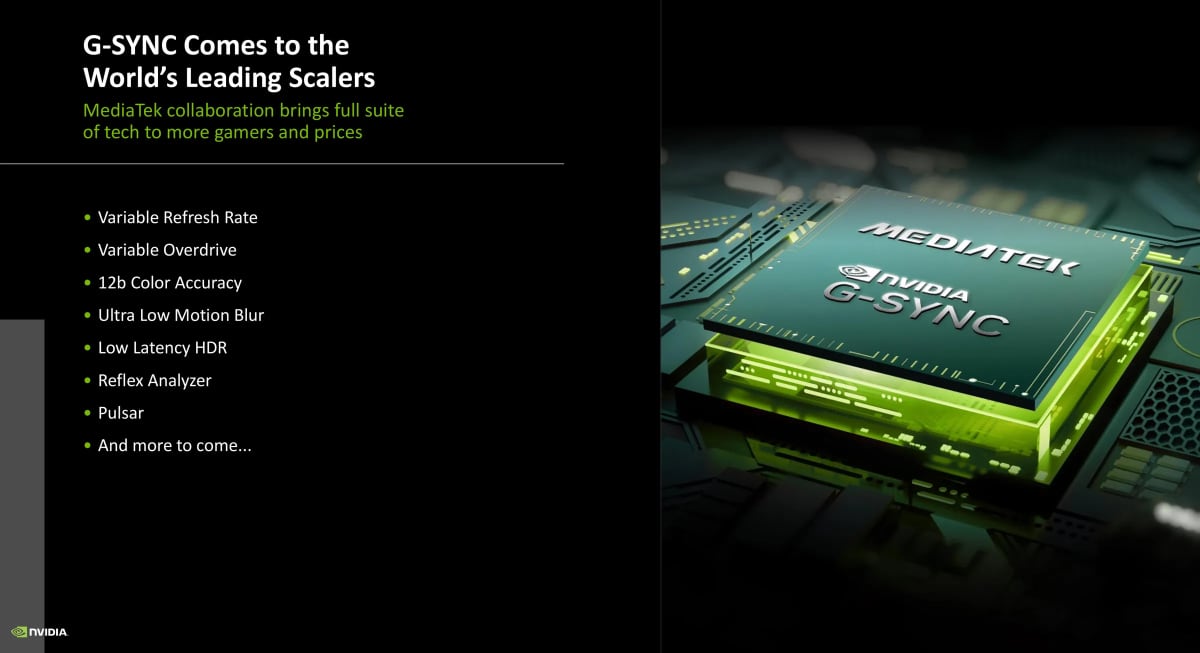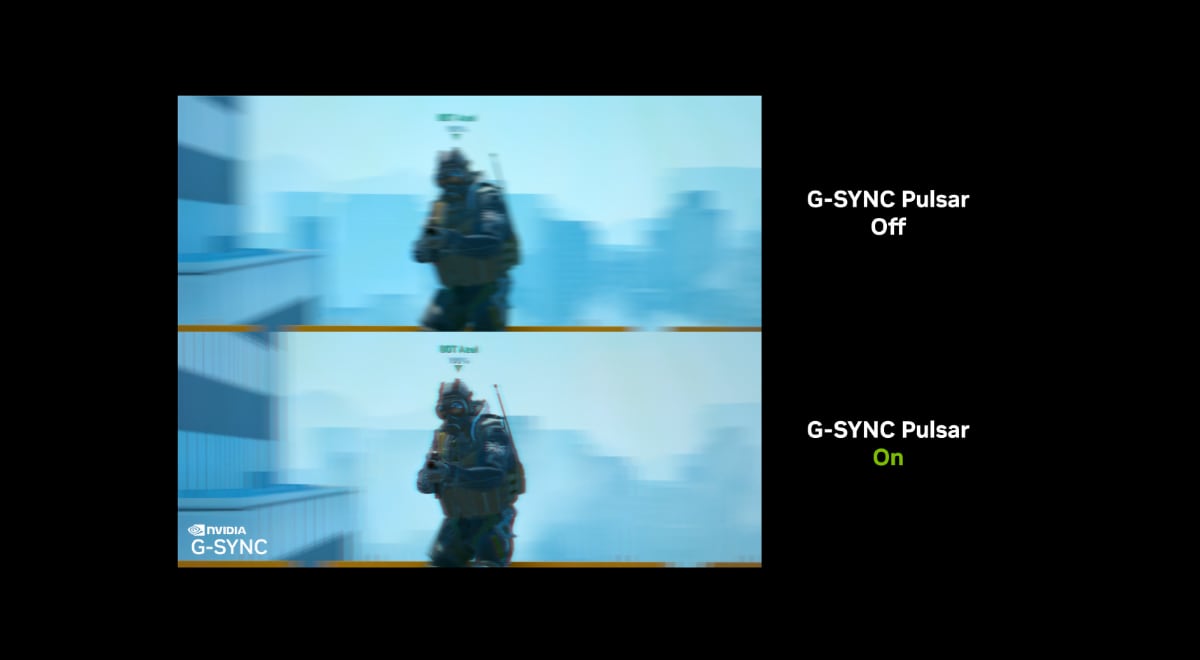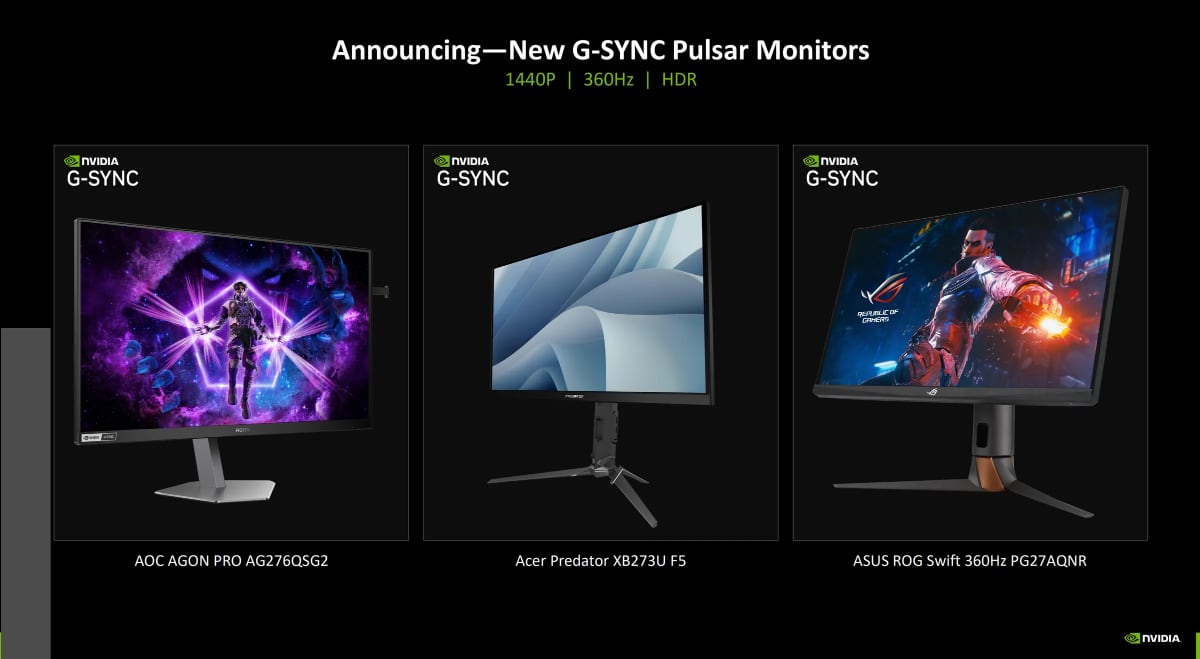Nvidia is ditching the separate G-Sync module for monitors by partnering with MediaTek, making monitors more affordable. It also unveiled the first three G-Sync Pulsar monitors.
Nvidia's variable refresh rate technology, G-Sync, was launched in 2013 and required a dedicated and fairly expensive module in monitors, as opposed to AMD's FreeSync.
In 2019, Nvidia introduced the module-free 'G-Sync Compatible', which high-end TVs also support today, but it lacks certain more advanced features of G-Sync.
The next step is to eliminate the need for the separate module while maintaining all features. To achieve this, Nvidia has partnered with chip designer MediaTek to integrate G-Sync directly into the MediaTek scalers already powering most gaming monitors.

The MediaTek scalers used in most monitors now support G-Sync. Photo: Nvidia
- "The companies’ collaboration, announced today at the Gamescom gaming gathering in Cologne, Germany, integrates the full suite of NVIDIA G-SYNC technologies into the world’s most popular scalers. Gamers can expect superior image quality, unmatched motion clarity, ultra-low latency, highly accurate colors, and more cutting-edge benefits on their displays," announced Nvidia.
This collaboration will help make G-Sync monitors more affordable, the company said.
First G-Sync Pulsar monitors
The new collaboration is also at the core of Nvidia's next-gen G-Sync technology, Pulsar, which combines variable refresh rate (VRR) with strobing for faster motion and greatly reduced motion blur.
- "A highlight of this collaboration is the introduction of G-Sync Pulsar, a new technology that offers 4x the effective motion clarity alongside a smooth and tear-free variable refresh rate (VRR) gaming experience," Nvidia announced.

G-Sync Pulsar combines variable refresh rate with strobing for improved motion on gaming monitors. Photo: Nvidia
The first three monitors to feature G-Sync Pulsar will launch later this year, all featuring 360Hz refresh rates, 1440p resolution, and HDR support, according to Nvidia. However, we question the HDR claim as they appear to be contrast-poor IPS LCD monitors, which cannot deliver HDR picture quality.
The monitors are the AOC Agon Pro AG276QSG2, Acer Predator XB273U F5, and Asus ROG Swift 360Hz PG27AQNR.

The first monitors to feature G-Sync Pulsar. Photo: Nvidia
Enough to compete with OLED monitors?
G-Sync Pulsar is expected to level up LCD gaming monitors in the competition against OLED monitors, which have taken the lead this year with 360Hz and 480Hz refresh rates combined with OLED's extremely fast pixel response.
Earlier this year, Nvidia released this video slowed to 1/24 speed to showcase the advantages of G-Sync Pulsar:









